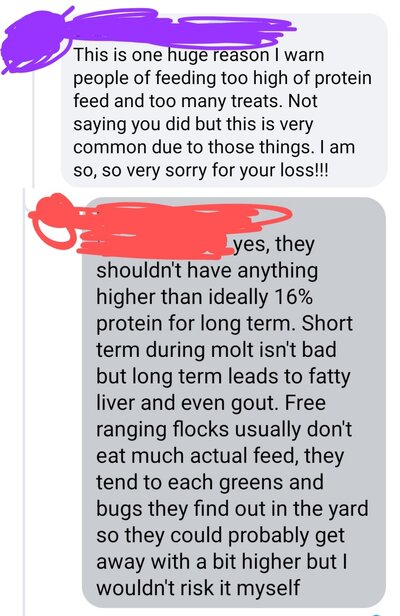I saw some people discussing fatty liver disease on Facebook, and there was someone who claimed a few things that confused me. I'd like to know what you guys think.
1. More than 16% protein is bad unless the flock is molting.
2. Corn shouldn't be the first or second ingredient because it is high-energy.
3. Too many fatty treats are bad.
My thoughts:
1. I don't see how the amount of protein has much of anything to do with fatty liver disease. In fact, I thought 18-20% protein was the recommended level?
2. If a diet is balanced properly, why would corn as the first or second ingredient be a bad thing? What does being a high-energy ingredient even entail?
3. I totally understand how feeding too many fatty treat could be bad. However, how much fat would be too much fat in a main feed?
1. More than 16% protein is bad unless the flock is molting.
2. Corn shouldn't be the first or second ingredient because it is high-energy.
3. Too many fatty treats are bad.
My thoughts:
1. I don't see how the amount of protein has much of anything to do with fatty liver disease. In fact, I thought 18-20% protein was the recommended level?
2. If a diet is balanced properly, why would corn as the first or second ingredient be a bad thing? What does being a high-energy ingredient even entail?
3. I totally understand how feeding too many fatty treat could be bad. However, how much fat would be too much fat in a main feed?





